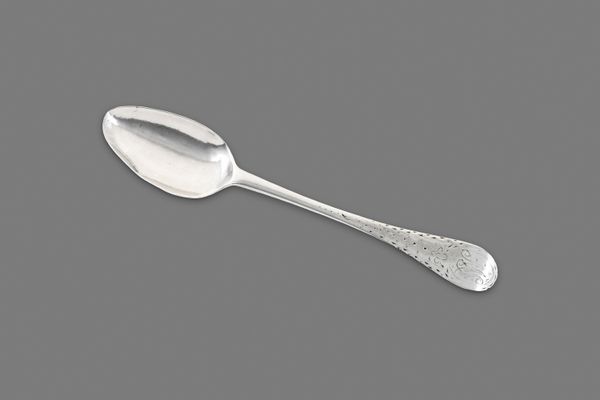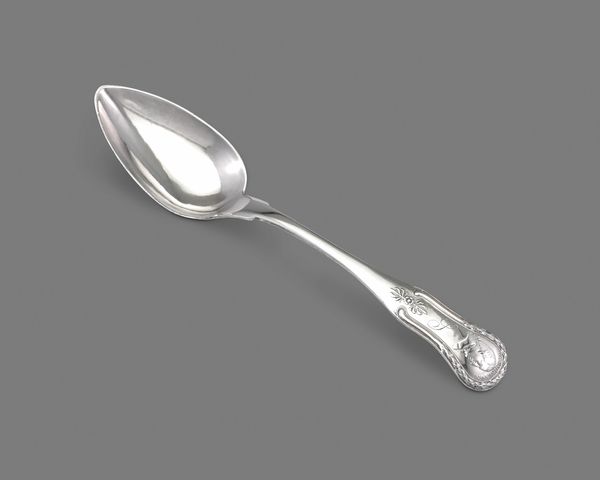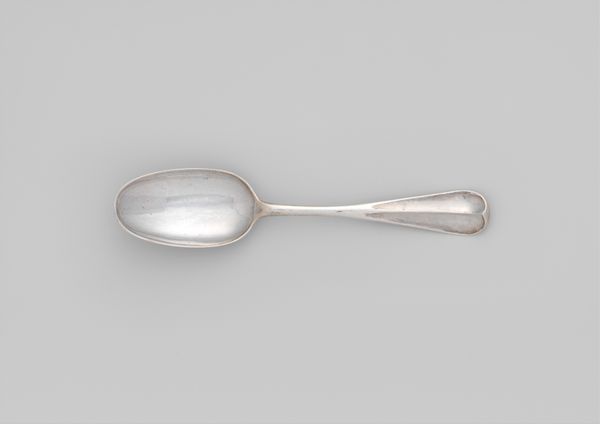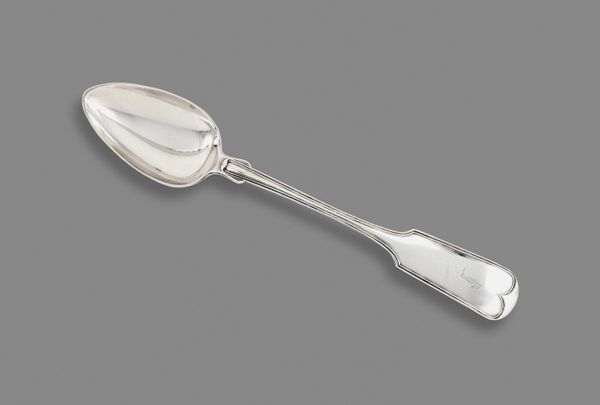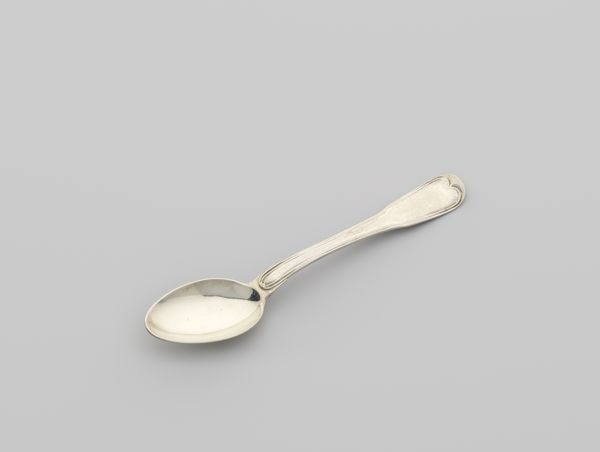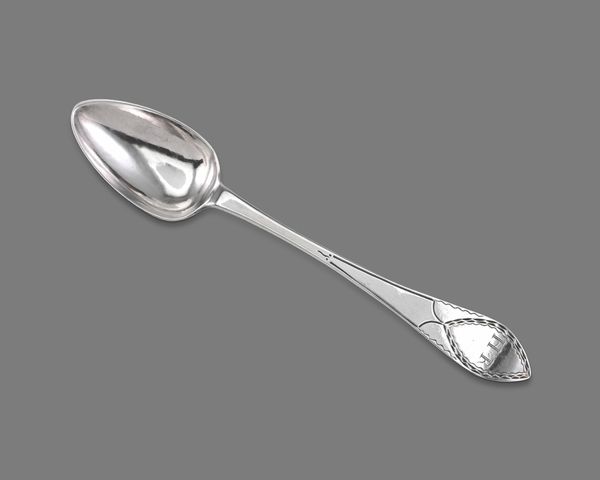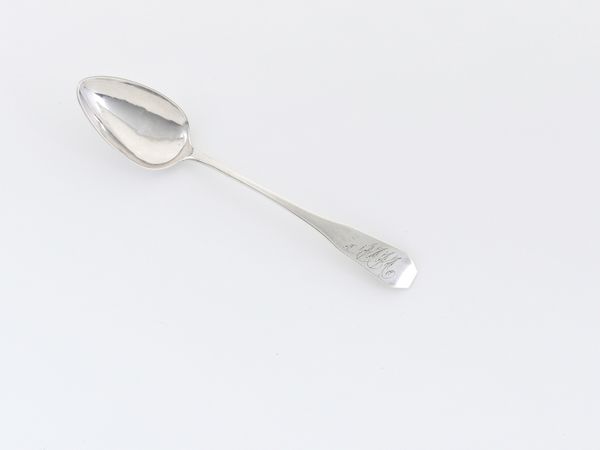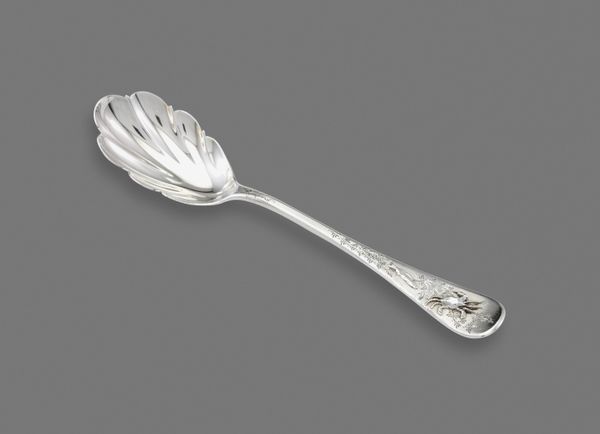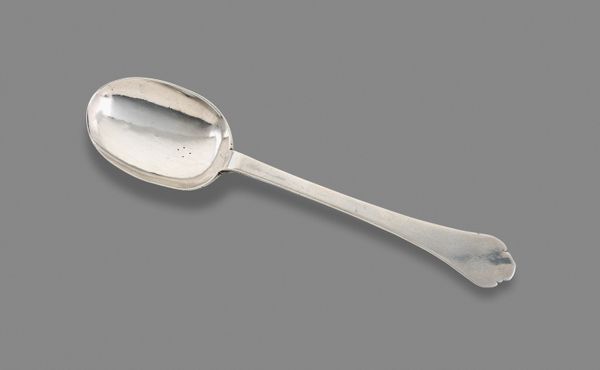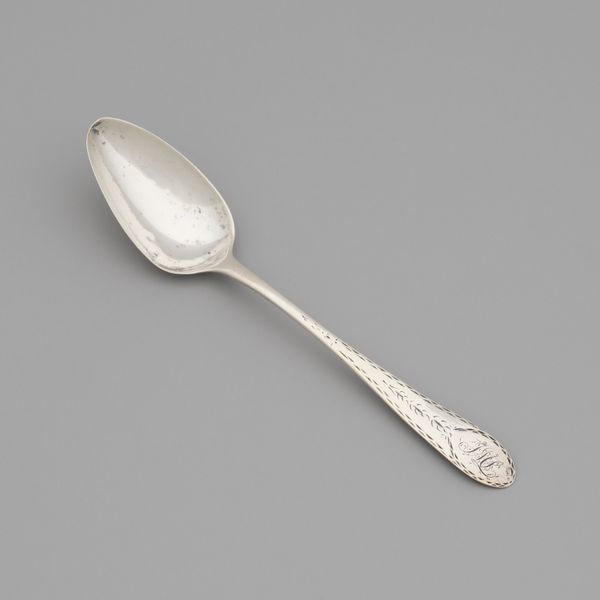
silver, metal
#
silver
#
metal
#
decorative-art
#
rococo
Dimensions: 19.4 × 6.7 cm (7 5/8 × 2 5/8 in.)
Copyright: Public Domain
Editor: So, this is "Tablespoon," crafted from silver around 1760-1775 by Hezekiah Silliman. It feels so...simple. Deceptively so. How can something so utilitarian carry meaning beyond its obvious function? Curator: Utilitarian objects often become powerful carriers of cultural memory. What does this spoon, particularly its Rococo style, evoke for you in terms of social rituals? Editor: Rococo...right! That's all about elegance and refinement. I guess it speaks to a specific social class and their elaborate dining customs, like afternoon tea? Curator: Precisely. But look closer. Consider the spoon's reflective surface. Silverware like this becomes almost a mirror, not just reflecting one’s literal image, but also mirroring the values of a society. What might this shiny surface tell us about status and self-perception? Editor: I hadn't thought of it that way. It’s almost like it’s saying, "See how important this meal – and *you* – are!" Almost performative in a way. Is it too much of a stretch to suggest that everyday items hold symbols of control and cultural hierarchies? Curator: Not at all! This 'simple' spoon embodies control over resources, elaborate social hierarchies, and even control over one’s own image. Everyday objects serve to re-establish an idealized and often distorted social reflection. This distorted reflection became a currency for survival at the time. The elite quite literally ingested power using refined silver such as this. Editor: I see. It is kind of amazing how such a basic tool is far more than what meets the eye. The image is not what you eat. Curator: Exactly! The surface creates the hunger.
Comments
No comments
Be the first to comment and join the conversation on the ultimate creative platform.
